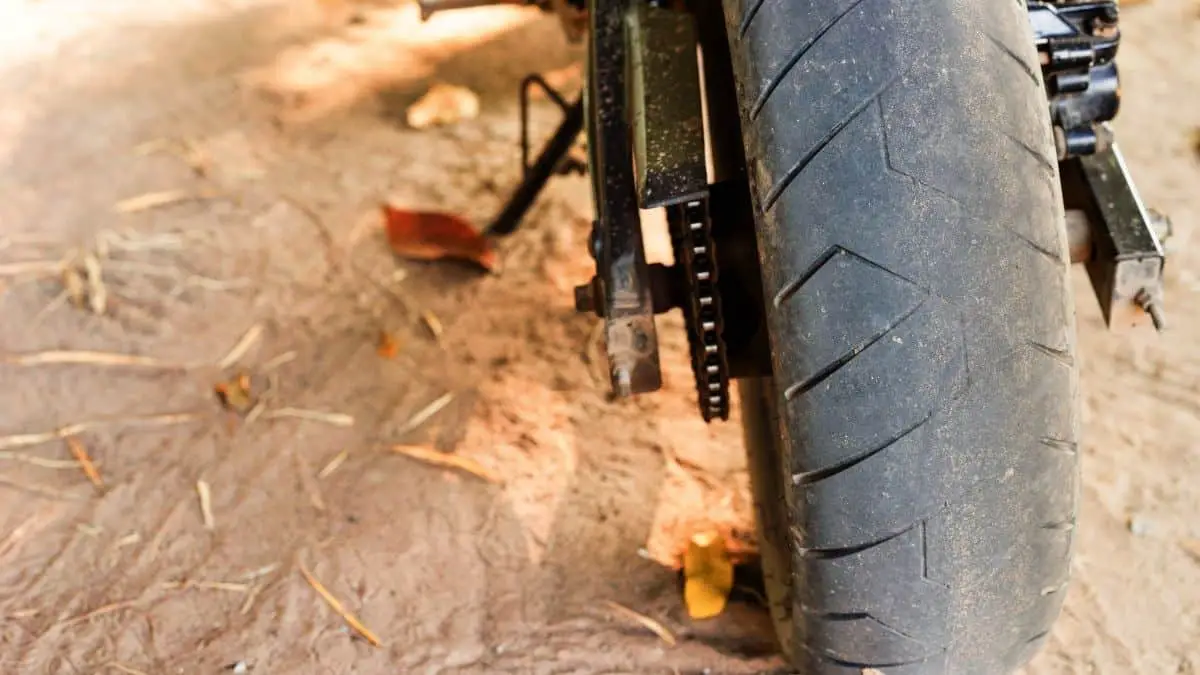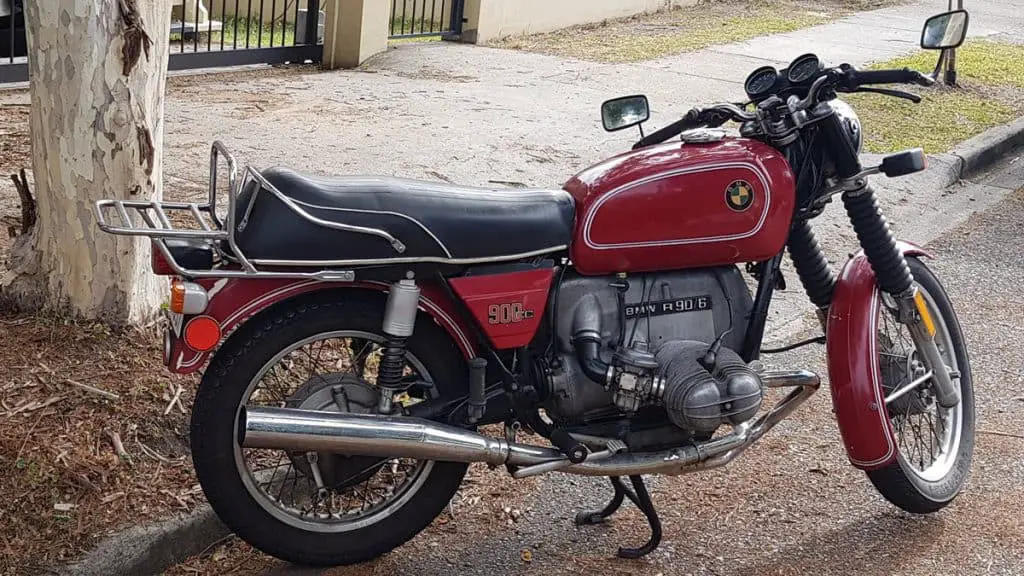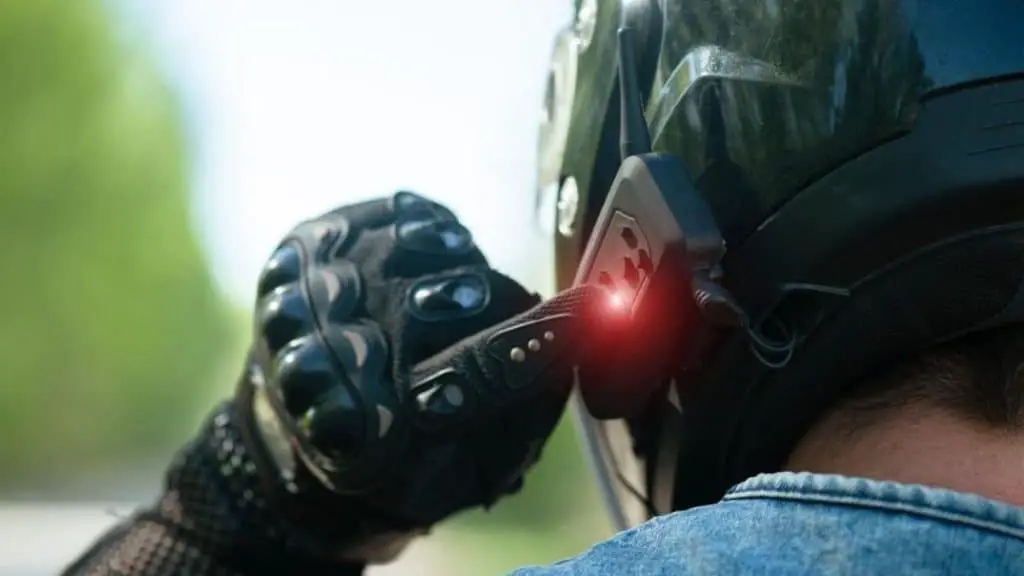Squared Off Motorcycle Tires: What Are the Causes? (+ Safety Factor)
What’s the longest time your motorcycle’s rear tire has lasted?
I ran one of mine through 16,000 miles before the treads were toast. And that’s when I faced issues with the squared off motorcycle tires.
If you haven’t been through this already, know that you will at one point or another.
So, why do motorcycle tires square off? How to recognize it, and what are the risks?
Let’s find out.
Motorcycle Tire Design and Squaring Off

Squaring off of the tire is the uneven wearing of the tire surface which usually occurs in the rear tire. The center of the tread may lose its circular profile and appear flat. In some cases, the shoulder between the sidewall and tread can also get flattened.
Before we go into the details, let’s take a closer look at some basic facts about motorcycle tires.
If you think motorcycle tires are just rubber hoops with a few grooves, think again.
Tire design is a complex subject that takes tons of effort from designers and engineers – no wonder tires are so pricey! The structure of a tire has multiple sections like the bead, apex, belt, shoulder, and tread.
Each part is carefully designed and tested to ensure tire durability and performance.
Think about the lean of the bike when you are on a twisty road. The tires should be able to withstand the centrifugal force acting on them on a sharp turn.
That’s why motorcycle tires have stronger sidewalls. Also, the tread surface is kept wide to prevent the sidewalls from coming in contact with the ground during sharp cornering. (Think lean angles more than 40 degrees.)
The other important fact is the forces acting on the front and rear tires are different. So the wearing patterns will be different for the two tires.
Great. But aren’t we talking about tires squaring off?
Bear with me. I’m going to show you how the dots are connected.
There’s one more thing that we need to talk about.
It’s the tire contact patch. Those are the two narrow areas on the two tires that keep you connected to the ground. (And to your life).
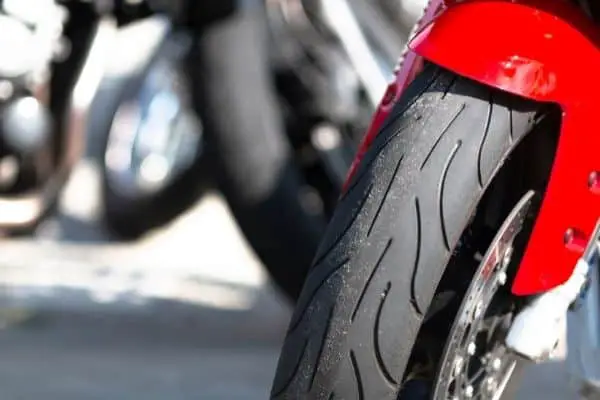
The contact patch will depend on the tire design. For example, a wide radial tire will provide you with a large contact patch even while leaning.
That’s good, isn’t it?
Yes, but not the way you think.
A larger contact patch might not give you better traction or grip. Nor will a reduced contact patch due to tire wear affect traction.
“Are you serious,” I hear you asking.
Well, the frictional force working between the tires and the ground depends on two important factors. These are the nature of the surfaces in contact and the weight of the bike. And more friction means better traction.
That’s why manufacturers ask you to break in the surface of a new tire before full scale rising. The breaking-in process roughens the smooth outer surface of the rubber and increases the friction.
Ok, I get it. Traction doesn’t depend on the surface area in contact. Then tell me this Mr. Wise Guy…
Can I use skinny tires of the same rubber grade on my bike and get the same traction?
No, no, and no!
Don’t forget there are other factors at play here.
You may have a 1000 cc engine to power your bike. A skinny tire doesn’t have the structural strength to handle that much thrust. Also, thin tires can’t dissipate the heat generated due to friction.
A wider tire also distributes the weight of the motorbike over a larger surface area. That allows manufacturers to use a relatively softer rubber grade without reducing tire durability. And softer rubber provides more traction.
Motorcycle Tire Squaring Off and Performance
Truth is, even the best motorcycle tires can get squared off.
But why does it happen in the first place?
This type of wear is caused due to riding excessively in upright positions. Rising straight up puts a lot of stress on the rear tires. More so, if you are carrying some extra load or a pillion rider.
Other than that, the wrong tire pressure can also contribute to the wear.
The amount of squaring off will also depend on the original tire profile. A tire with a flatter profile will appear less squared off than one with a sharp or pointy profile.
Now, let’s get to the performance factor.
It goes without saying that worn-out tires can be a safety HAZARD.
If the tires have squared off, check for tread wear. The easiest way is to check the tire wire indicators. If the tread is worn out, it’s time to replace the tires.
Even if the tread looks ok, your tire might be past its prime. Follow the manufacturer’s recommendations regarding the duration for which you can use a tire.
However, if everything is fine and your tires have still squared off, can you continue to use them?
What Are the Risks of Riding With Squared Off Tires?
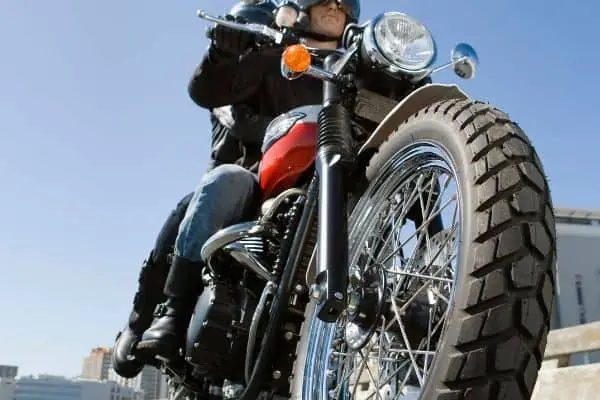
As we have already seen, small changes in surface area will not affect the traction in a major way.
But there can be other effects.
Actually, the squaring off of the tires causes a shift in the location of the contact patch. Now, it’s not located in the center of the tire. This may make the bike feel odd or you may experience loss of grip while handling tight corners.
Also, this type of contact patch may shift constantly while riding in a straight line on an uneven patch. As a result, the steering might feel less responsive and the ride jerky. (I remember gripping the handlebars tighter when it happened to me.)
What it all boils down to is…
Replacing squared-off tires or riding with them is your decision. If you don’t mind the bike getting a bit twitchy and want to wait till the tires hit their wear limit, feel free to do that. That means you will have to adjust your riding to compensate for the tire square off.
Can you correct squared off tires?
Honestly, chances of that are lesser than having a wine named after me at the local bodega.
Riding through twisty roads for thousands of kilometers might work. Even if you manage it, your tires will be worn out anyway after that.
And don’t ever think of shaving off the edges with a saw or a cheese grater. You’ll simply ruin the tire.
But one thing’s for sure.
Any moment you feel that squared off motorcycle tires are compromising your safety, go ahead and change them.
Frequently Asked Questions
Should I replace a squared off tire?
If the treads are worn out, you definitely need to replace a squared off tire. If the treads are still intact, you may adjust your riding style and keep using the tires. However, keep in mind that this might be a bit risky, as your steering won’t be as precise as you’ll need it to be!
How do you know if your motorcycle tire is out of balance?
Some signs that your motorcycle tire is out of balance are the steering pulling in one direction or the bike vibrating at certain speeds. Other signs are poor fuel economy and a fast wear rate in a tire.
What happens if you run a motorcycle tire backward?
Running motorcycle tires backward can affect their durability. In addition, it can also reduce the tire’s ability to disperse water. So, stability in wet conditions will be compromised.

